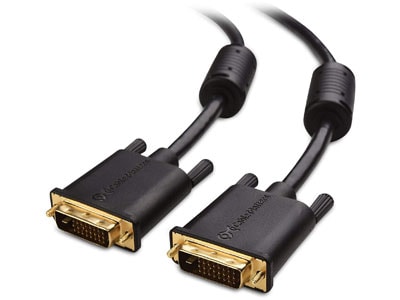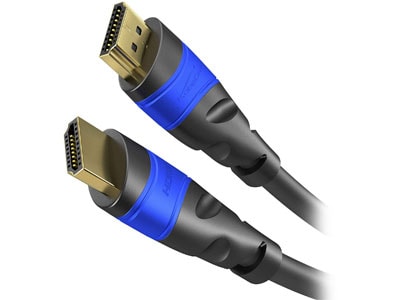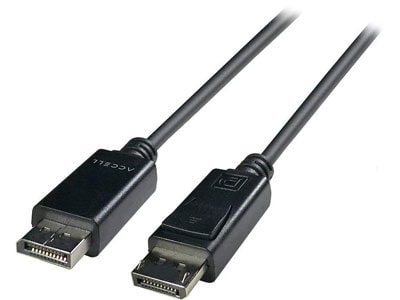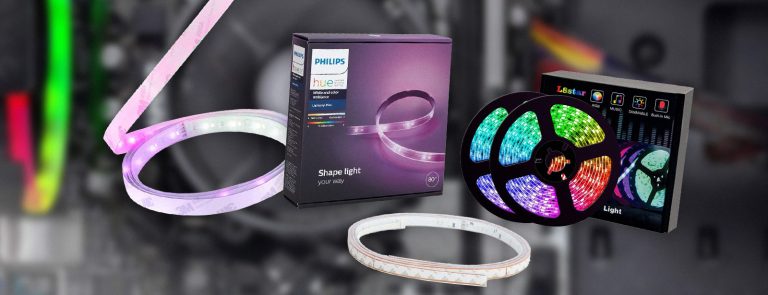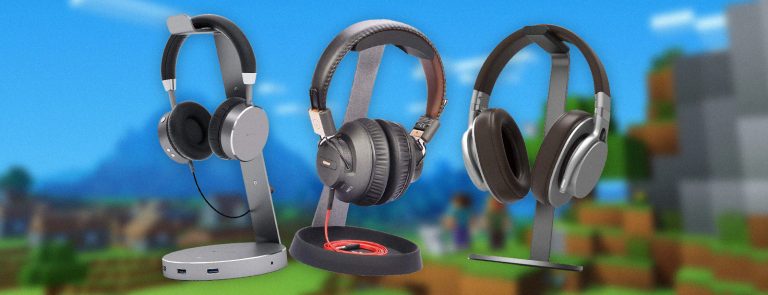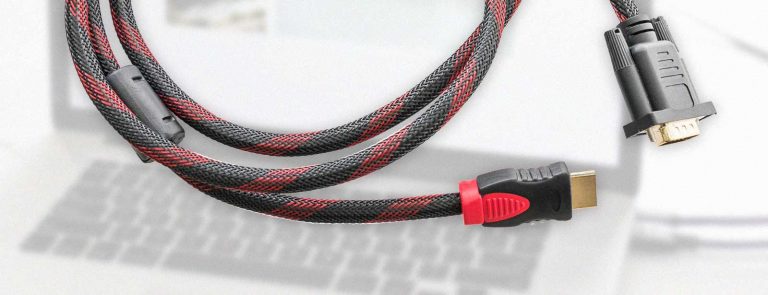What Cable Do I Need to Play at 144hz?
For those who need those answers fast, here’s a short version of what should work best for you.
- A DisplayPort 1.4 cable will let you play 144Hz at 1440p resolution and 120Hz at 4K resolution.
- An HDMI 2.0 or newer cable will also provide the same performance provided that your monitor supports 144Hz over HDMI.
- A DVI Dual-link, HDMI 1.2 or newer, or DisplayPort 1.2 cable will work well enough for 144Hz gaming at 1080p resolution
Playing games smoothly at 1080p or 4k resolutions require more than just a good enough monitor; you have to make sure that you get one with 144Hz if you want seamless motion and a CPU with a good enough processor and graphics card.
However, one thing that even some gaming enthusiasts tend to miss out is the cable. You need to know the most suitable type of cable for 144Hz gaming that will work best with the best 1440p gaming monitors.
Why did we recommend those options in particular?
To answer that, we need to get a better understanding of how display monitors and each type of cable works.
- Supports 4K @240Hz
- Supports 8K @60Hz
- High Bit Rate 3 Connection
What does 144hz mean?
144Hz refers to a monitor’s refresh rate. The refresh rate is commonly mistaken for frame rate, but there is a distinct difference between the two.
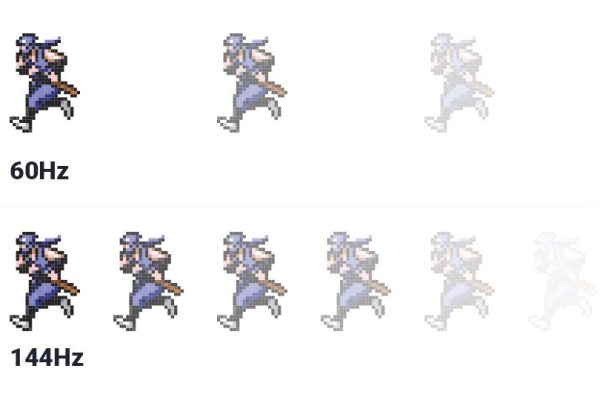
It’s possible to have a setup that can have a frame rate of over 144 frames per second but only 144 of those frames will be shown thru the display.
A Road for Data
One of the reasons why gamers tend to get the wrong cable for their monitors is the common belief that any wire is good enough as long as it creates a physical connection between the rig and the monitor.
However, that’s far from the truth.

The best way to explain the need for a good cable is to compare the hardware to a road. The monitor needs to keep getting data from the rig to display your games, and a high resolution with 144Hz refresh rate will require a lot of data, at least 20 gigabytes of data per second in most cases.
Think of the data as vehicles and the cable as the road. Sure, any road will allow vehicles to pass through, but if there’s too much vehicles and the road is not wide enough, you can’t expect the vehicles to move as fast as needed. Not enough cars, not enough data to provide a constant display. You want to make sure that the road – the cable – can accommodate the traffic.
What If I Pick the Wrong Cable?
We’re not saying that playing at 144Hz without thinking much about the type of cable is impossible, but having a less-than-optimal choice can cause a wide variety of issues.
Here are the most common problems that you can expect if your cable can’t transmit enough data to your 144Hz-capable display monitor.
- Low refresh rate – there’s just not enough data passing through the capable, forcing you to play at lower frequencies.
- Flickering – In some cases, there are split seconds where the lack of data will cause your monitor to not even display a few frames, creating a lot of flickering.
- Failure to display – the worst-case scenario: there’s just not enough data for the monitor to display anything at all, rendering your 144Hz monitor useless.
When it comes to cable options you have a few main options, but they can be classified into three categories based on their interface: DVI, HDMI, and DP
Our Cable Recommendations
DVI
DVI or Digital Video Interface was the mainstream option for 1080p gaming. A DVI cable’s most prominent feature is the broad heads and ports connecting the display monitor to the CPU, specifically the video card’s DVI port. DVI can be further divided into DVI-A (Analog) DVI-I (Integrated) and DVI-D (Digital), but since we’re connecting the cable to 144Hz monitors, we’ll limit the discussion to DVI-D cables.
DVI cables can either be single or dual link depending of the number of transmitters used to send data. While a single link DVI cable is good enough for playing at 1080P and at 60Hz refresh rate, the Dual link DVI can handle the same resolutions at 120Hz or 144Hz.
Sure, 144Hz gaming above 1080p may be beyond what a DVI cable can do, but if you don’t plan to play at higher resolutions, this DVI cable is the best budget-friendly alternative you’ll find out there.
HDMI
HDMI or High-Definition Multimedia Interface is what you’d call a “2-in-1” option since it allows the transfer of both audio and video data. An HDMI cable looks a lot more compact than a DVI one, and looks a lot more similar to USB ports, featuring a trapezoid-shaped port. There was a time when HDMI wasn’t even an option for 144Hz gaming at any resolution, but the release of HDMI 2.0 and 2.1 has changed that.
If there’s one thing that might keep you from picking an HDMI cable, that would be your monitor’s limitations. While most monitors today work with HDMI cables, only a few of them like the Dell D2719HGF support 144HZ over HDMI, which means you have to be careful when picking even among 144Hz monitors to avoid getting locked to lower frequencies.
HDMI 2.1 is as good as it gets, and this pick has a good balance of cost to performance. While playing at 144Hz is not possible at 4k resolution with this cable, it shouldn’t be an issue if you’re playing at 1440p or lower. Besides, 4k at 120Hz is not that bad.
DisplayPort
DP or DisplayPort is the newest of the three interfaces, and is now considered the mainstream option for most gaming enthusiasts. A DP cable has an asymmetrical design resembling a rectangle with one sloped end. Today, DP cables are considered the mainstream option not just for 144Hz gaming, but even for gaming at lower frequencies at different “standard” resolutions.
While older versions of DP (up to 1.2) already support 144Hz at 1080p resolution, version 4.1’s introduction of DSC (Display Stream Compression) made it possible to achieve a similar level of performance at higher resolutions without sacrificing too much image quality. To make things even better, DP cables can be made compatible with DVI, HDMI, and even older VGA (Video Graphics Array) ports provided that you have the right adapter.
Accel’s DP1.4 cable will easily handle 144Hz gaming at 1440p resolutions or lower, but it can reach up to 240Hz with Display Stream Compression. Of course, 120Hz at those resolutions and 60Hz at 8k resolution are always welcome options, especially considering the cable’s reasonable cost.
What Cable do I use for 144hz?
Finding the best cable for 144Hz gaming is just part of optimizing your setup. There are a few more things you need to consider if you want to make sure you get the most out of your display.
- Always go for cables and monitors certified by the Video Electronics Standards Association (VESA). Uncertified products may deliver less than ideal results (despite advertising a certain level of performance).
- Always check the integrity of the cable before picking; any signs of deep “dents” on the cable skin may indicate damage and affect the performance of your cable.
- Some monitors support 144Hz, but not for all types of interfaces. Even the best cable won’t deliver a good enough performance if its interface is locked to a lower refresh rate.
- Using adapters for different types of interfaces and cables may work, but don’t expect the same level of quality as when you’re using the same interface.
- Make sure your CPU is powerful enough to render games at a fast enough frame rate. The rule of thumb is that the game’s average FPS (frames per second) should be equal or higher than the monitor’s refresh rate.
- Some visual tearing and irregular response times may occur if your CPU can render more than 144FPS. You can eliminate this problem by enabling V-sync to limit the game’s frame rate to up to 144 FPS, equal to your monitor’s refresh rate.
That wraps up this talk about picking the right cable for 144Hz gaming. We hope this has helped you create a more optimal gaming setup.
Want to share your thoughts on cables and 144Hz gaming? Feel free to leave a comment below!
GamingFeature invests hundreds of hours of research and testing to help our readers in finding products that fit their specific needs. You support us through our independently chosen links, which earn us a commission. Read more about what we do.
